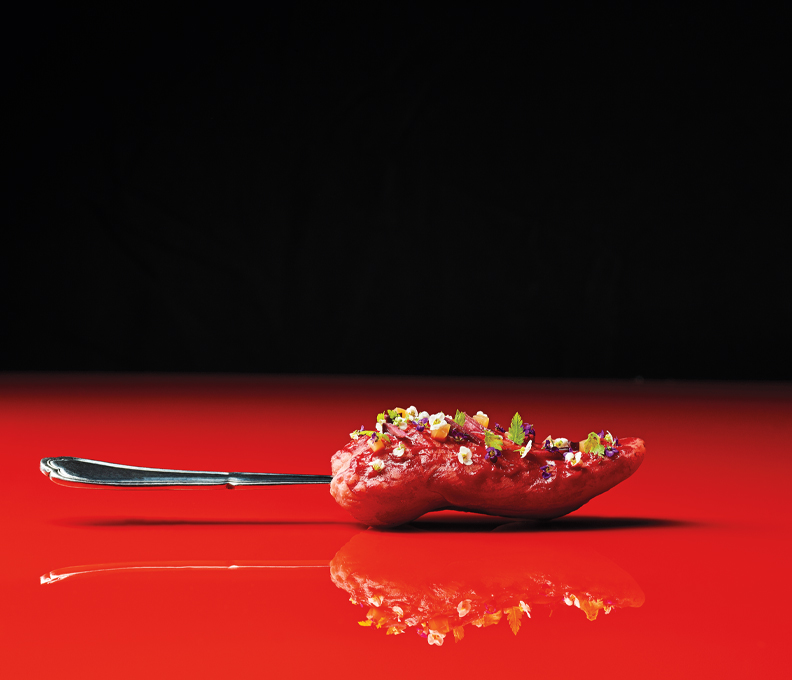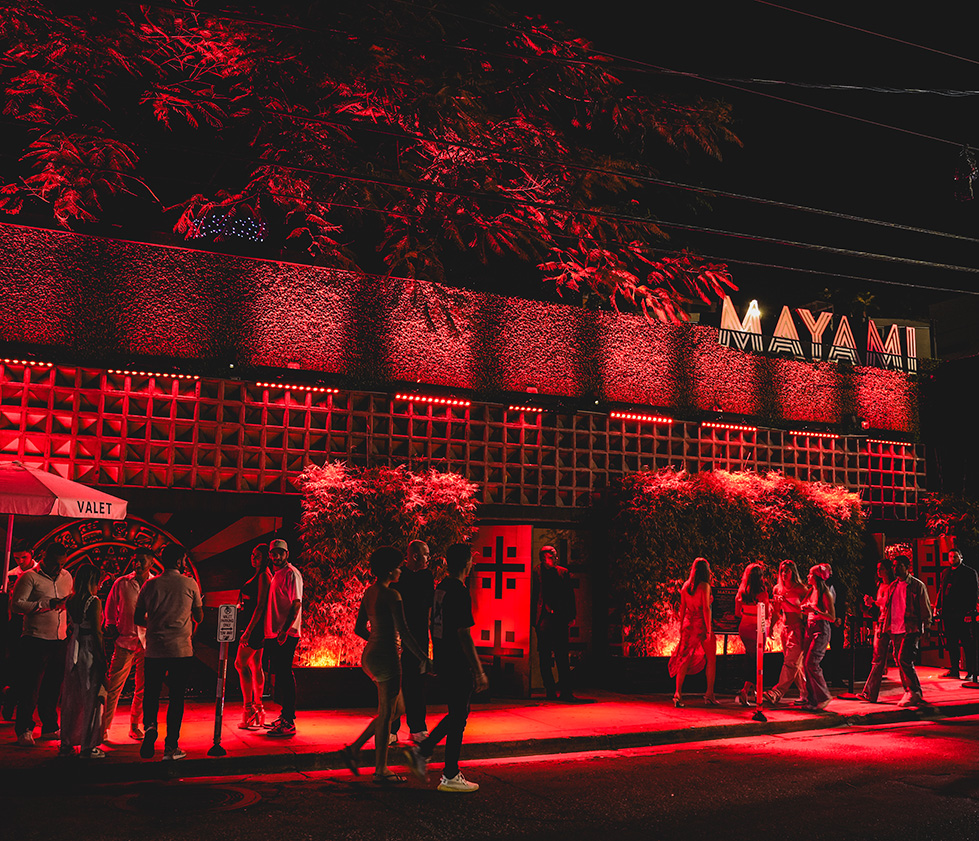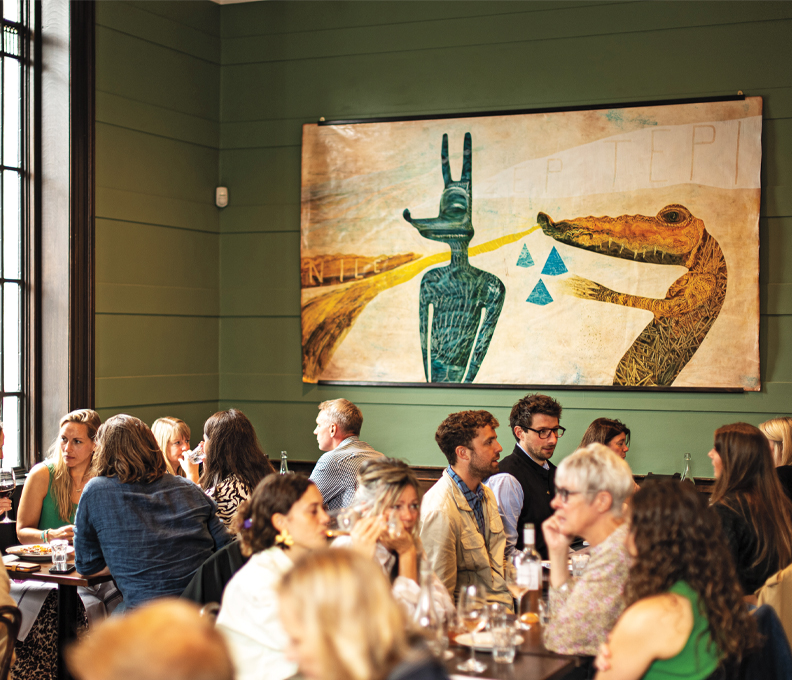Happy Accidents Led These Famous Chefs to Their Signature Dishes
Mishaps and improvisations led to aha moments for David Chang, Wolfgang Puck, Alice Waters, and others
November 25, 2022
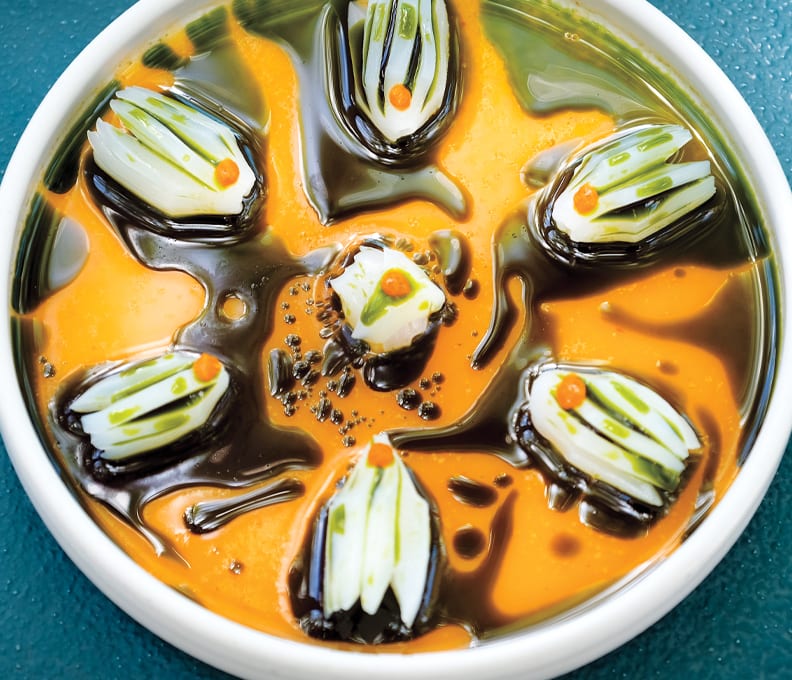
Bigfin reef squid tiradito with vegetarian tiger’s milk at Itamae, Miami / Photo: Andrea Lorena
The farm-to-table movement began in the 1960s on the West Coast, part of the hippie movement to conserve energy and support local communities. It coalesced in 1971 with the opening of Alice Waters’ innovative Chez Panisse, which set in motion a major shift that spread across the country. Chefs and home cooks could become more proactive in their food choices, while supporting local farmers.
Since then, the movement has brought us craft breweries, small wineries and organic farms offering a variety of tastier and healthier fruits, vegetables, meats and eggs. Chef-inspired meal kits are now delivered to our door, obscure ingredients are readily available, and online videos and tutorials teach us how to put it all together.
Case in point: At the beginning of the pandemic I was trying to cook Asian dishes at home when I saw a video by Momofuko chef David Chang that illustrated how it was done. Forget culinary school: It turns out a mix of a few simple ingredients—soy sauce, fresh grated ginger, agave and a squeeze of lime—was the game changer that could make just about any Asian dish come alive. Now that restaurants are open again and chefs have resumed engaging us with exciting food and drink specialties, it’s a good time to look at some magical culinary game-changers. Here’s how several famous chefs stumbled upon their aha moments.

Salmon pizza at Spago, Beverly Hills, California / Photo: Wolfgang Puck Fine Dining Group
The prince of personal pizzas, Wolfgang Puck invented the dish that made him a household name in typical Hollywood fashion. Actor Joan Collins, a longtime customer, sat at her usual table and ordered smoked salmon with brioche. Unfortunately, the restaurant had run out of the bread. Puck looked around the kitchen and replaced the brioche with a freshly baked pizza crust, creating an elevated version of the classic bagel, cream cheese and smoked salmon. It morphed into Puck’s signature smoked salmon pizza, a staple at the chef’s restaurants and served at the Oscars’ glamorous Governors Ball.
Valerie Chang, co-owner of Miami’s acclaimed Peruvian-Japanese restaurants Itamae and B-Side, had her aha moment during the pandemic. “My dad, brother and I were trying to create new sauces for our ceviches and tiraditos that would taste clean and beautiful. I was experimenting with tiger’s milk, the secret sauce of Peruvian ceviche, considered an aphrodisiac. It is traditionally comprised of coconut milk, garlic, chili pepper, lime juice and fresh fish juice. We discovered we could make a vegan version without fish juice that when used as a marinade or mother sauce for many of our dishes brought out the individual taste of each morsel of seafood or vegetable.” As it was the height of the pandemic, there was more sauce than there were customers, so she tried freezing it. When it defrosted, each dish it was blended with maintained its individual freshness, flavor and integrity—and vegan tiger’s milk, now a menu staple, was born.
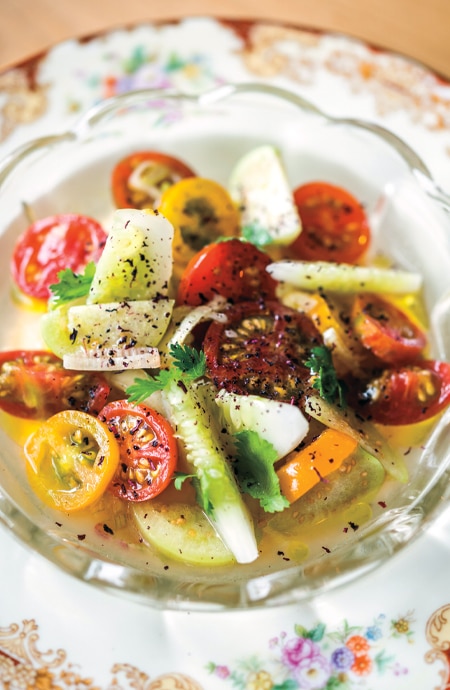
Mister Mao, New Orleans / Photo: Paprika Studios
Sophina Uong, chef/owner of the innovative tropical restaurant Mister Mao in New Orleans, had a game-changing moment born of disaster. “I was making lobster bisque, but the shells were too big for the pot. I needed them to break down quickly so I could extract the flavor. I was in a hurry. Then I saw the Hobart mixer, so I dropped in about 30 pounds of lobster shells, put on the beater attachment—and foolishly walked away. I forgot about it until the pastry chef came to work and started screaming. Everything was red. Lobster shells covered the floor, the counter and every nook and cranny of the Hobart. It was a hot mess, but the end result was an amazing pure lobster oil, with a distinctive flavor that we still use today in our lobster bisque, crudo and tomato salad.”
Chef/restaurateur David Burke, a frequent competitor on Top Chef Masters and owner of 15 restaurants across the country, recalls his surprising patented dry-age process for beef. “I wanted to find a dry-aged flavor that enhanced my beef, so I sent a rib eye to the lab to analyze. About four months later my buddy at the lab called to tell me the rib eye had 340 different flavor compounds. Then he stunned me by stating the number-one flavor profile was cardboard. Cardboard! Where was that coming from? I went to the dry-aging room and saw the floor was covered with—cardboard. A light bulb went on as I realized that as its moisture evaporated, the rib eye was absorbing the flavor of that cardboard and would likely do the same with any flavor introduced in the cooler. Then I thought about salt, which usually seasons steak when it’s finished cooking. Why not season it from within by having the meat absorb its flavors in the cooler?
“A block of pink Himalayan salt had been sitting on my desk for a while,” he continues. “I knew it had more complex flavors than regular salt, and that could benefit the aging process. So I lined the whole cooler with pink Himalayan salt blocks, and it created amazing flavor. Now I hold a U.S. patent for my salt-based dry-aging process for beef, and our guests can’t get enough of the umami flavor.”
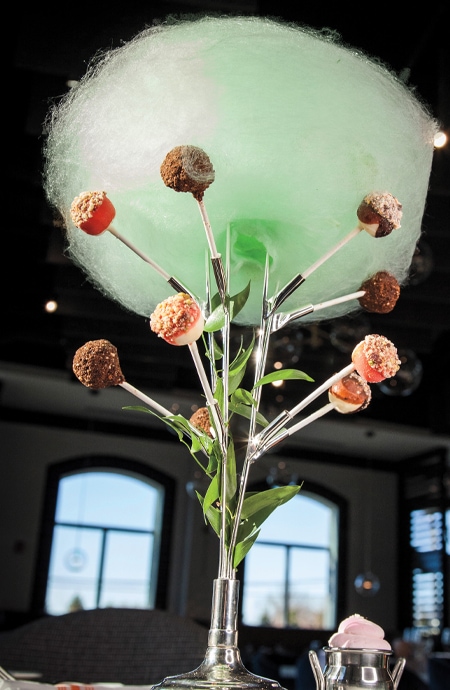
David Burke’s cheesecake pops / Photo: David Burke Hospitality Management
Chef Burke goes on to describe his second game-changer, gourmet lollipops. “I was recently divorced and rarely ate a real meal at home, so there was nothing much in the refrigerator except some shards of my salmon pastrami and cream cheese. My two kids were coming to visit and I wondered if I could trick them into eating something other than fast food with what I had on hand. I had just bought some lollipop molds at a garage sale and had a drawer full of sticks left over from something or other. I combined the salmon and the cream cheese and pureed them into a paste. The paste went into small round molds, and then got placed on a stick. After the lollipops firmed up in the fridge, I presented them to the boys. They wouldn’t eat them, but I knew I was onto something. They would make a great hors d’oeuvre and lead to a line of savory gourmet pops. Then I thought I could create dessert pops that would have broader appeal, which became my cheesecake pops, now a signature dessert at most of my restaurants.”
